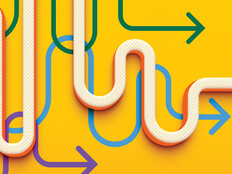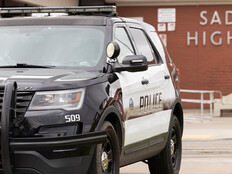Company Offers Free Facial Recognition Software to Boost School Security
With the wave of school shootings that have swept the U.S. in recent years, concerns about physical security and safety have overwhelmed parents, teachers and school administrators alike.
Facial recognition technology, which would allow schools and law enforcement to quickly identify who is entering their schools and when could give school districts a powerful means to make schools even safer.
Last month, RealNetworks, the streaming media company that garnered attention in the ‘90s and early 2000s for developing the first audio streaming solution, announced it would offer its facial recognition software, SAFR, for free to over 100,000 school districts.
“School safety has become one of the top national issues in the United States in 2018,” said Rob Glaser, chairman and CEO of RealNetworks in a press release. “We are proud to give our leading-edge SAFR for K-12 technology solution to every elementary, middle, and high school in America and Canada. We hope this will help make schools safer.”
As schools begin to integrate new technology to enhance both classroom efficiency and school safety, having free access to software like SAFR could be crucial for low-budget districts.
SIGN UP: Get more news from the EdTech newsletter in your inbox every two weeks!
Software Uses Artificial Intelligence to Protect Students
According to RealNetworks, the facial recognition software utilizes AI and machine learning to learn the faces of those entering and exiting schools, matching them to databases of faces provided by users to screen for unwanted visitors.
When there is a request to be added to a database, schools take an initial picture for registration. Once approved by administrators, the photo taken by the school is saved using an encrypted hash and housed on the school’s local server, Wired reports.
Districts interested in using SAFR will need at least one existing IP camera and access to the SAFR app, which can be downloaded onto Mac OS and iOS tablets and computers.
RealNetworks has also announced that SAFR apps for Windows, Linux and Android devices are on the way.
The software is designed to work on faces at varying distances, from all angles and under different lighting conditions, as well as with those that are partially obscured or altered with makeup, according to the company. RealNetworks also says the software is able to recognize facial expressions.
SAFR has a rate of 95.2 percent accuracy when identifying faces “in the wild,” according to a study conducted by the University of Massachusetts, and was ranked 18th among facial recognition software tested by the National Institute of Standards and Technology.
Administrators Consider Privacy Concerns Over Biometric Security
Use of AI programs and cameras to collect biometric data is not an entirely new concept.
While administrators may be excited about the benefits of implementing biometric data collection at their schools, there are concerns about collecting and capturing this kind of data on students.
At the University Child Development School in Seattle, administrators bypassed this concern by only using the SAFR technology on adults.
“SAFR immediately proved to be an enormously valuable asset, helping to ensure that our open, urban campus stays secure,” Paula Smith, head of UCDS told RealNetworks. “The facial recognition solution provides parents and staff faster campus and building access, freeing up staff so they can devote more time to student needs.”
As more schools adopt facial recognition software and other biometric scanning devices — like using fingerprint scanners to take attendance — the debate over balancing security and privacy is sure to keep heating up.









